London's Victorian Architecture: The Definitive Guide for Travellers
Small group educational tours for senior couples and mature solo travelers with History tours including those examining the Industrial revolution, Victorian Britain the Gilbert and Sullivan era via the D'Oyle Carte family and the cities such as Glasgow, Liverpool and Manchester.
4 Oct 21 · 9 mins read

Victorian Architecture of London
London’s architecture during the Victorian Era was defined by the transformation of British society, due to the rapid changes of the Industrial Revolution. Industrialisation transformed British life, leading to innovative new technologies, rapid wealth accumulation, and a proliferation of new goods and services. Yet, this came at a great cost. Traditional agricultural communities were torn apart, as the poor were forced to move to towns and cities to find work. Conditions in the new industrial workplace in Victorian Britain were particularly exploitative, with poor wages, long hours (often up to 14 or 16 hours per day), and child labour common. Rapid migration to the cities – and the poor conditions found there – created the famous slums of Dickensian London. Industrialisation also had an environmental and health impact, as the poet William Blake’s famed ‘dark satanic mills’ emitted smog and covered houses with soot.
The effects of industrialisation, both good and bad, can be read in Victorian architecture. The technological advances of the industrial era led to new forms of building that utilised steel and glass; while the rapid urbanisation of London created a new and lively street life. At the same time, architects and thinkers – shocked by the environmental and social downsides of industrialisation – retreated to the Middle Ages for inspiration.
If you’re interested in learning more about the architecture of Victorian London we encourage you to read Chris Rogers’ How to Read London: A Crash Course in London Architecture. Fans of English architecture should also make sure to take a look at our article on the Georgian Style of Architecture.
Neo-Gothic Architecture:
While the Georgian Era had been dominated by Palladian and Neo-Classical architecture, the early Victorian Era saw the rise of a new movement – Gothic Revival. It was a clear response to industrialisation, which advocates of neo-Gothicism saw as increasing social inequality, destroying the natural environment, and leading to moral decay.
Gothic Revival architecture emulated the style of the Gothic churches of the Middle Ages – all intricate detail, gargoyles, stained-glass windows, and soaring church naves. The Victorian Era was marked by widespread popular nostalgia for the Middle Ages, particularly encapsulated by the romantic chivalry of Sir Walter Scott’s Ivanhoe.
 London’s Westminster Abbey exemplifies the English Gothic style that inspired the Gothic Revival movement of the 19th century.
London’s Westminster Abbey exemplifies the English Gothic style that inspired the Gothic Revival movement of the 19th century.
For writers such as John Ruskin, the retreat to the Middle Ages was a moral one, as Ruskin sought to reincarnate medieval values in response to what he saw as the amorality of the new capitalist society. Moreover, Ruskin claimed, Gothic architecture, with its eccentricities and flaws, was a more authentic expression of the individual artist than the classical pursuit of geometric perfection.
Gothic architecture was seen, too, as an authentically ‘English’ style, as opposed to the imported Greek and Roman forms of neo-classicism. Lastly, for many it had a religious aspect: as architects such as August Pugin, a convert to Catholicism, revived Gothic architecture in order to spearhead a broader return to the spirituality of the Middle Ages.
Nonetheless, the old, neo-classical style still remained popular. Neo-Gothic architects were often forced to work alongside the old neo-classicists, as in the re-building of the Palace of Westminster, home to the Houses of Parliament, following a fire in 1834.
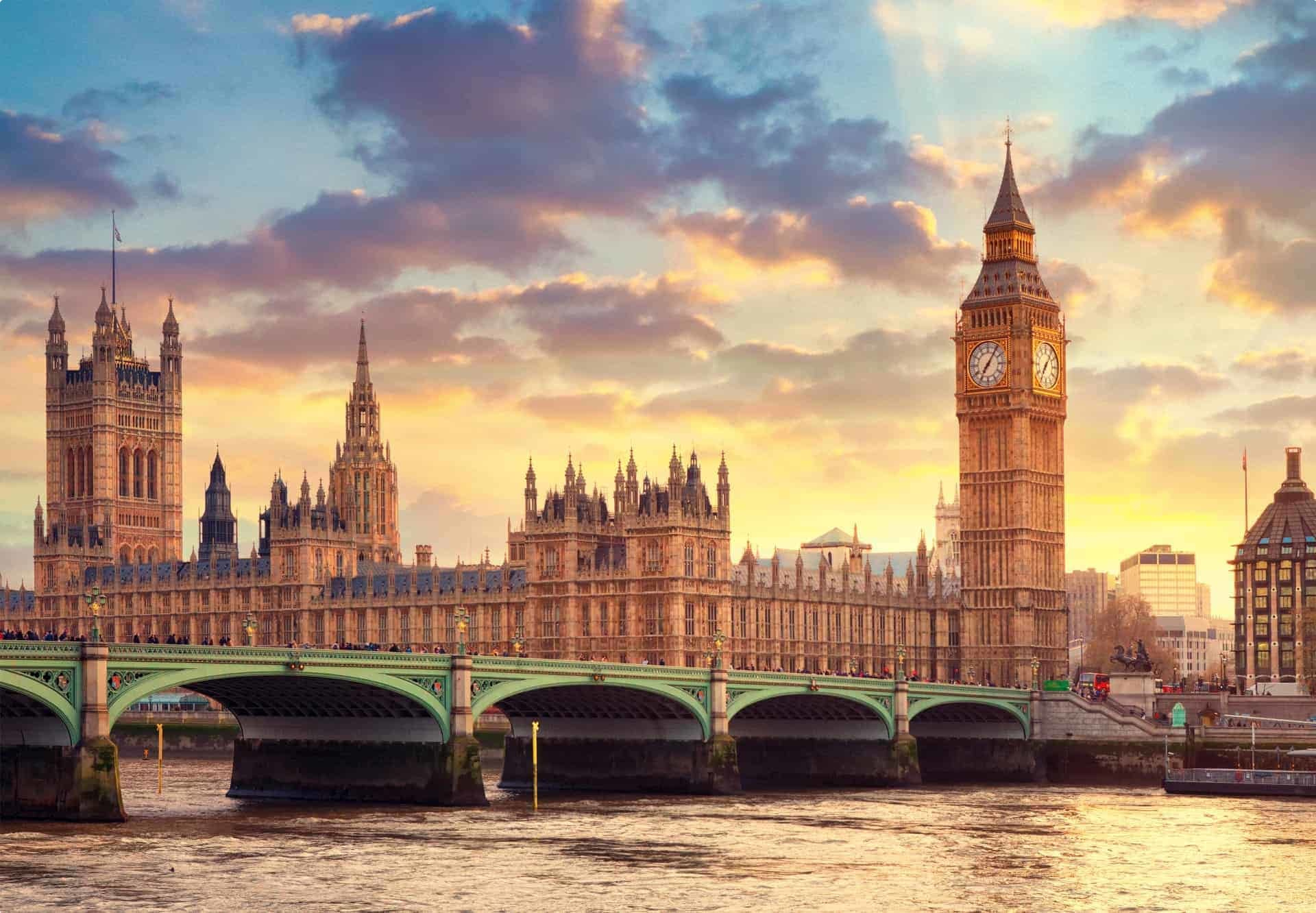
The architectural brief called for a neo-Gothic style to complement the surviving medieval Abbey and Westminster Hall. However, the Palace was built by a partnership between Pugin and the established architect Charles Barry, who was then best known for his Classical work. Barry’s plan reveals its Palladian origins through the logical geometry in which the corridors, lobby, and chamber of each House of Parliament are mirrored about the central space.
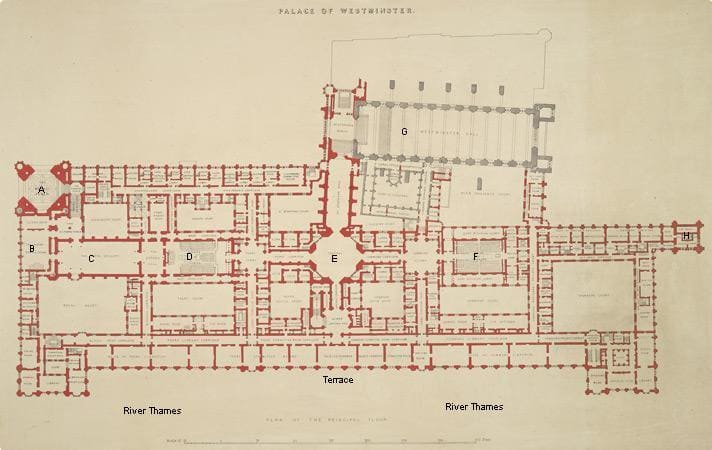
The exterior, by contrast, is neo-Gothic. Three towers of differing heights and forms balance the long horizontal building. Far above the street, the clock tower is covered in intricate detail of buttresses, corbels, and gargoyles.
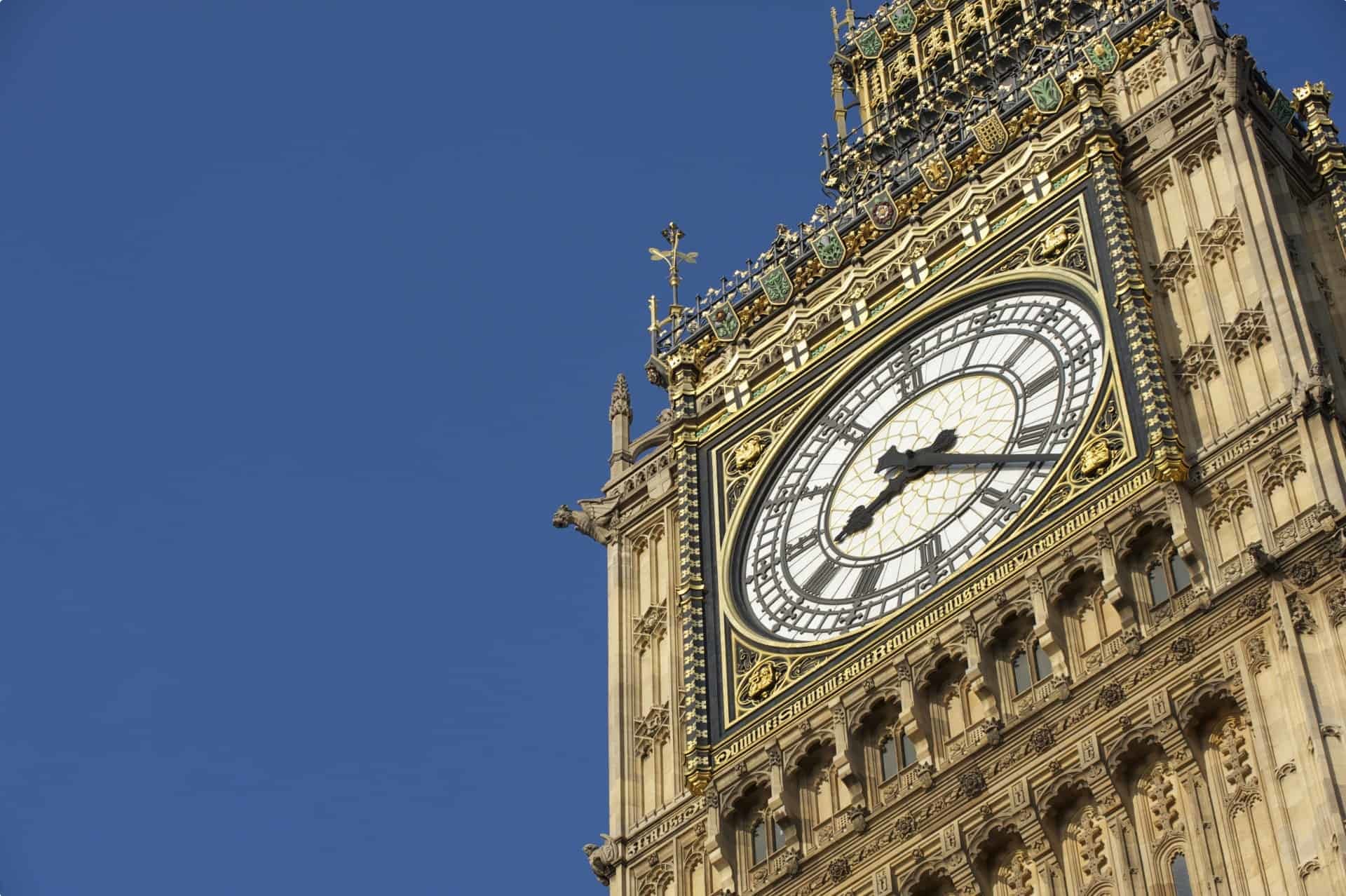
Neo-classicism would win out, however, in the competition to build a new building for the four Public Offices (Foreign, Indian, Colonial, and Home) that administered Britain’s growing empire. George Gilbert Scott, the architect, had envisioned a Gothic style for the new building. This was vetoed by the Prime Minister, Lord Palmerston, who – like many Whigs (now known as Liberals), had an affinity for Neo-Classical architecture.

The result was an elegant building in the classical style. Each of the original offices had its own quarters, with its own smaller courtyard. The four street facades are slightly different: while two are symmetrical, the one facing Whitehall features arches and colonettes (small columns), and the St. James façade is covered in coloured granite. The suite of rooms built for the Foreign Office also includes the State Stair, a magnificent Roman-style staircase.
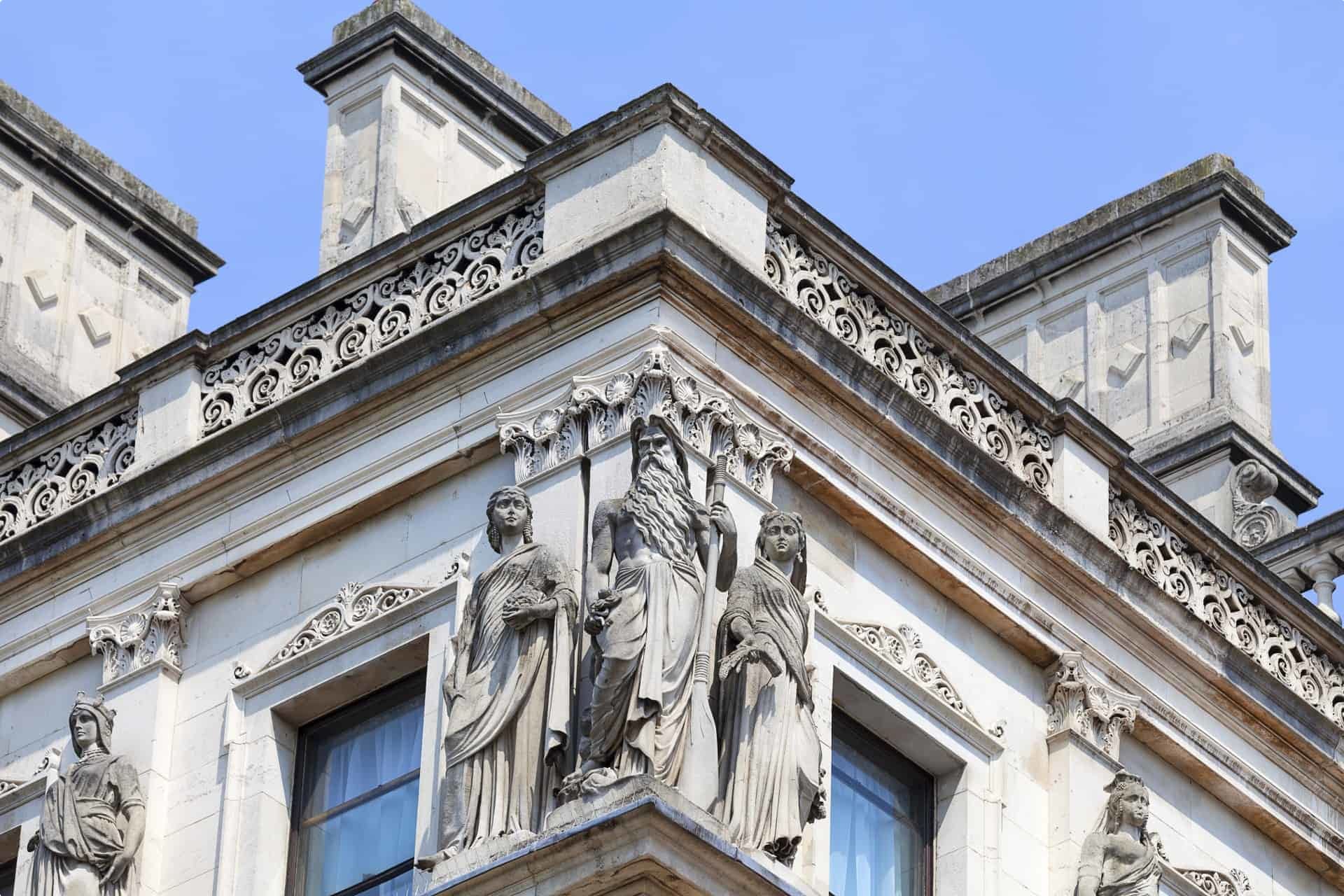
Yet, the neo-Gothic style is evident in several other buildings around London. One of the most monumental is St. Pancras Station, built as a terminus for the Midland Railway. Like the Public Offices, it was built by George Gilbert Scott, who unlike Ruskin and Pugin, saw no contradiction between the medieval and the modern. Scott toured several European cities for inspiration, blending elements from English and Continental European cathedrals for the richly layered exterior. At the same time, the building flaunts its modernity in the spectacular iron structure of the Grand Staircase.

The Gothic revival is also manifest in the Law Courts, newly built to bring together the upper-level civil courts of England and Wales, with their ‘fairy-tale roofline of towers, fleches, gables and chimneys’ (Rogers, 100).

Technological innovation:
The architecture of the Victorian Era was shaped as much by the new technologies afforded by industrialisation as it was by the struggles between the Neo-classicists and advocates of the Gothic Revival. New technologies were encouraged by the royal family: Queen Victoria’s German husband, Prince Albert, was passionate about the emerging science and technology of his generation. In order to ‘increase the means of industrial education and extend the influence of science and art upon productive industry’, Prince Albert spearheaded the Great Exhibition in Hyde Park of 1851.
The exhibition centred on the Crystal Palace, a giant building of iron and glass, that at the time, was considered an architectural marvel. The building was designed by Joseph Paxton, who was the Head Gardener at Chatsworth House. At Chatsworth, Paxton had successively experimented with building larger and larger greenhouses, using the recently developed technologies of cast plate glass and cast iron.

Based on these designs, Paxton developed his plan for the Crystal Palace. Never before had a building so light and airy been built on such a scale. The building was also far cheaper than other proposed models – and thanks to the ability of the new railways to transport materials to London rapidly – was built in an unprecedented nine months. For Londoners, Paxton’s triumph – from servant at Chatsworth to master architect – seemed to encapsulate the new social mobility that had been opened up by industrialisation.

Inside the building, visitors watched demonstrations of the cutting-edge technology of the day, including electric telegraphs, microscopes, a prototype facsimile machine, and an early submarine.
Though the Crystal Palace would burn down in 1936, the legacy of the Great Exhibition continues to shape London’s architecture. In the lead up to the Exhibition, government planners purchased 96 acres of land in South Kensington, and over the next fifty years, established the institutions that are now called ‘Albertopolis’: the Victoria and Albert Museum, dedicated to decorative arts, the Natural History and Science Museum, the Royal Colleges of Art and Music, Imperial College, and the Royal Albert Hall. Though Albert never lived to see ‘Albertopolis’ completed, the buildings are all suburb exemplars of ‘High Victorian Gothic’.
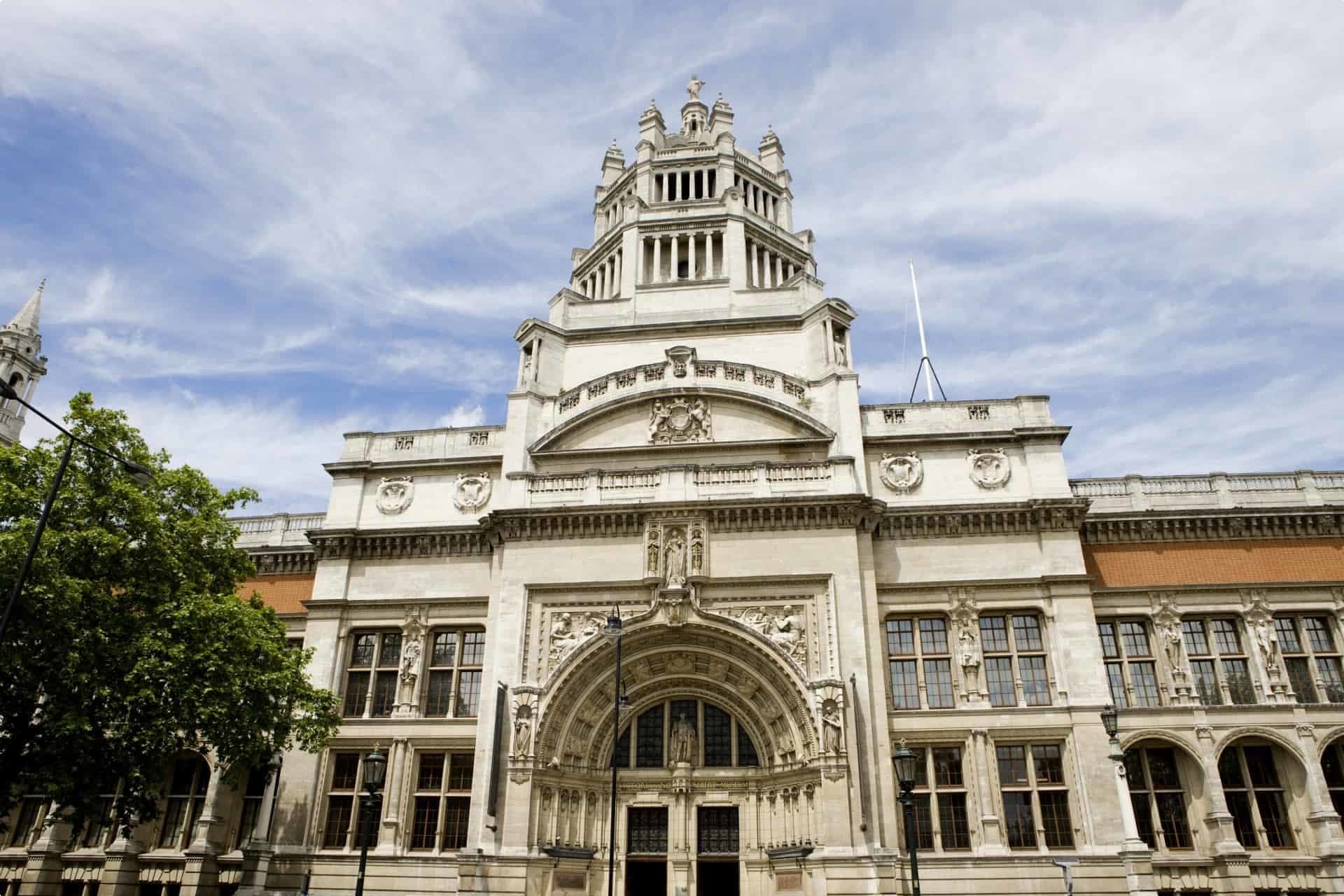
The innovations of the 19th century were encapsulated in the iconic Tower Bridge. In 1876, the City of London held a competition, trying to find a bridge design that could be built downstream from London Bridge without disrupting river traffic activities. Over 50 designs were submitted for consideration, with the winning design by Horace Jones selected in 1884. At the time Jones’s design was the largest and most sophisticated ‘bascule bridge’ in the world. Two spans met in the middle for road traffic, but were lifted up by hydraulic power to make way for incoming boat traffic. The bridge also included two steel towers that allowed pedestrians to cross above the roadway when it was open.

Due to its proximity to the Tower of London, Jones’s achievement in steel was controversially cloaked in neo-Gothic stone detail – including a medieval-style gargoyle, who as some critics have pointed out, ‘looks as surprised to be perched at the top of a modern construction of steel, hydraulics and electricity as [they] were to see such an achievement cloaked’. (Rogers, 105).
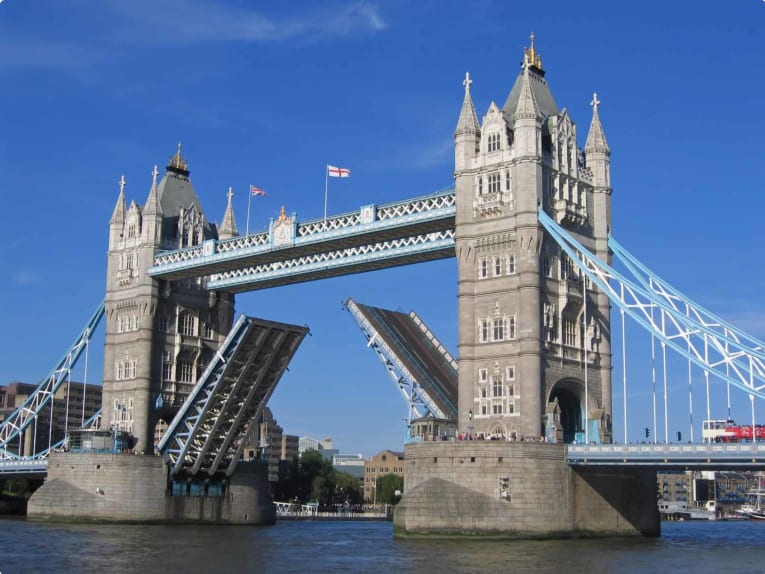
The most enduring architectural achievement of the Victorian Era, may, however, be the establishment of the London Metropolitan Railway (or London Underground). The world’s first underground train service began operations in London in 1863, connecting Paddington in the west with Farringdon in the east. The tunnel was built using the cut and cover method, in which excavation equipment was used to dig a large trench, which was then covered by brick walls and a roof. Despite the technological advance heralded by the Underground, the initial stations’ architecture was modest and classical. The first line still remains in usage today, and the London Underground has expanded to cover Greater London, handling up to 5 million passengers every day.
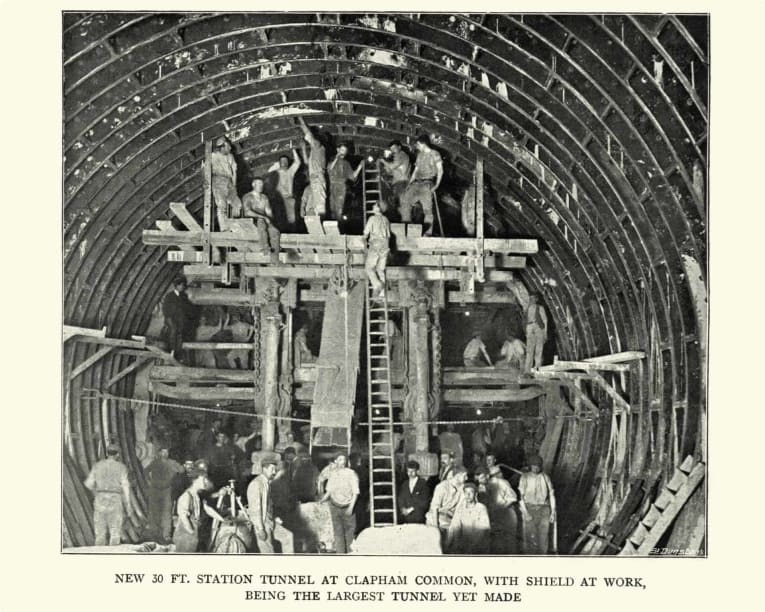
Changing Society:
Industrialisation also rapidly transformed the everyday lives of Londoners. The city grew rapidly, from under 1 million at the start of the 19th century to over 7 million by the century’s end. Workers flocked to London from rural Britain, but due to a lack of work and poor conditions, were often forced to live in the notorious slums of the East End. The East End was popularly associated with crime, vice, and squalor, particularly following the notorious Jack the Ripper murders.
At the end of the century, the first council estates were established in order to deal with the problems of slum housing. Following the publication in 1890 of Charles Booth’s poverty maps, which exposed the widespread poverty in Eastern London, the Boundary Street Estate was established. Apartment blocks were laid out along wide, tree-lined roads radiating out from a central circus. Unlike later public housing, the apartments were richly decorative, patterned in pink and orange stripes – and soon became too expensive for their original inhabitants.
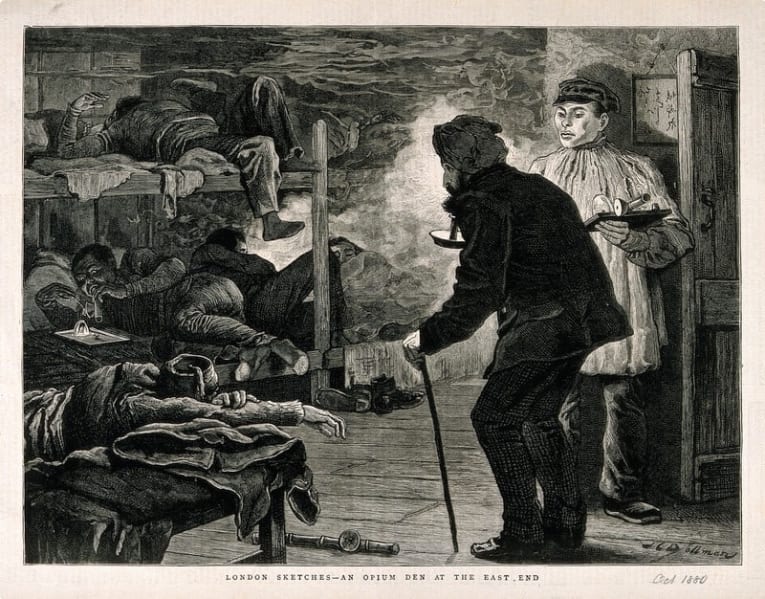
At the same time industrialisation created a rapidly expanding middle class, many of whom sought to escape the poverty and overcrowding of the city. The first suburbs were established as self-made businessmen sought spacious homes with gardens. Bedford Park, laid out by Jonathan T. Carr from 1875-86, developed the ‘Queen Anne style’ that would define subsequent British suburban housing.
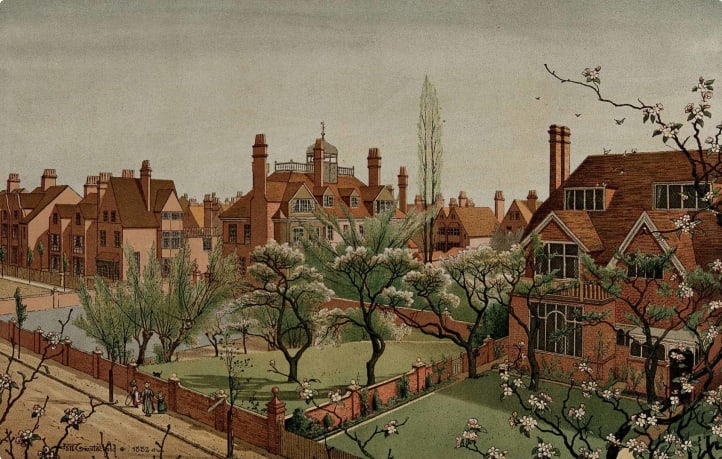
Avoiding both the coldness of neo-classicism and the religious connotations of the Gothic revival, the homey and comforting style mixed Old English and northern European elements. Houses were moderately sized (intended to be manageable without servants), and each had unique and often asymmetrical details of gables, bays, and massive chimney stacks. Houses were laid out on straight streets, which converged on a new church, pub, and row of shops, all attached to the local railway station.
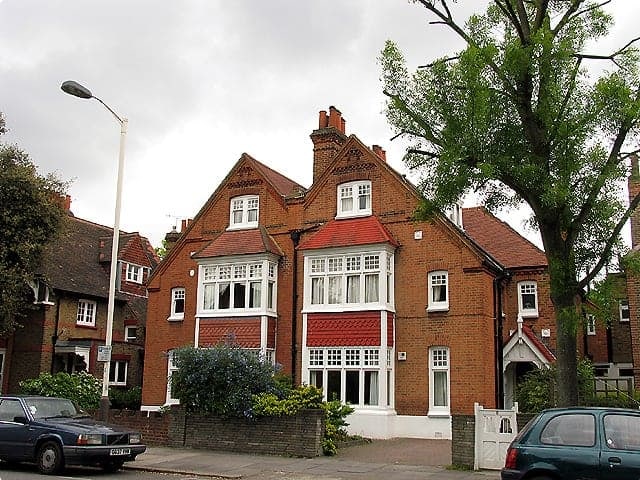
Moreover, by the end of the 19th century, an urban – and relatively more prosperous – working class had been created. Less staid than is stereotypically believed, the new urbanites of the Victorian Era demanded diversion. Exhibition buildings, music halls, and concert halls sprang up, particularly in what is today London’s famous West End theatre district. Typical of the new theatres was the Duke of York’s Theatre, located on Trafalgar Square. Reflecting the new respectability of the theatre, the building has a restrained Italianate façade, contrasting sharply with the Rococo revival of the interior, with its plasterwork figures and scrolls in cream, gold, and yellow.
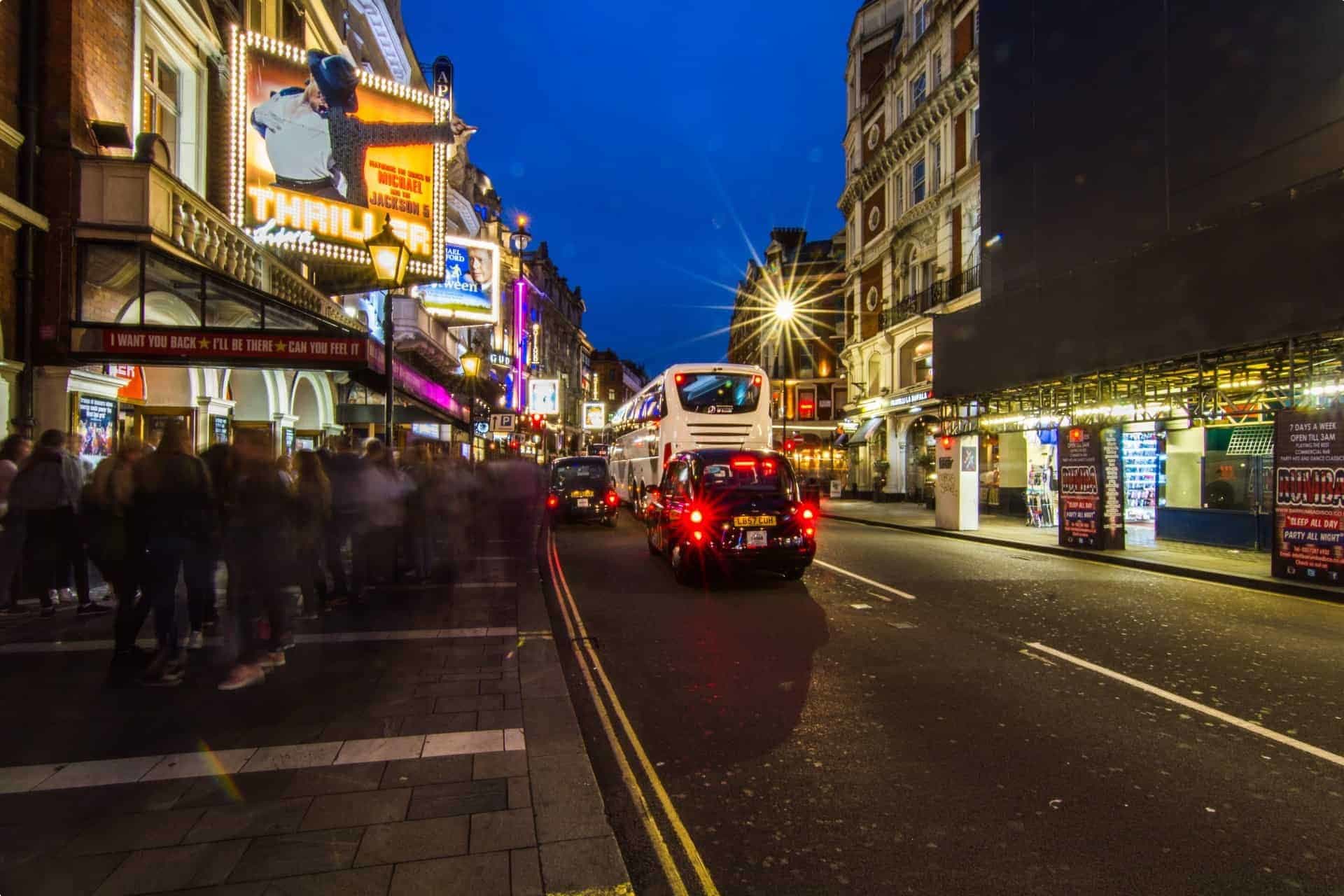
As industrialisation changed society through the 19th century, it also transformed London’s built environment. If this article has interested you in tracing the development of Victorian Architecture, Odyssey Traveller runs a number of tours which visit England. Of particular interest might be Queen Victoria’s Britain, which focuses in on the architecture and history of the 19th century; and the London Short Tour, which gives you plenty of time to explore (or re-explore) Victorian London.
Updated 4th October 2021
Related Tours
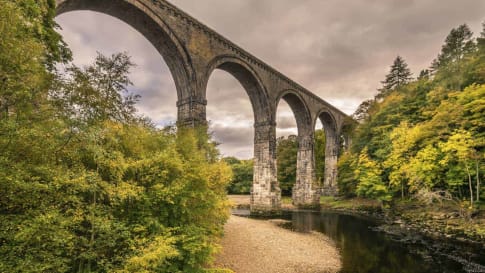
23 days
Oct, Apr, SepCanals and Railways in the Industrial Revolution Tour | Tours for Seniors in Britain
Visiting England, Scotland
A small group tour of Wales, Scotland & England that traces the history of the journey that is the Industrial revolution. Knowledgeable local guides and your tour leader share their history with you on this escorted tour including Glasgow, London, New Lanark & Manchester, Liverpool and the Lake district.
From A$17,860 AUD
View Tour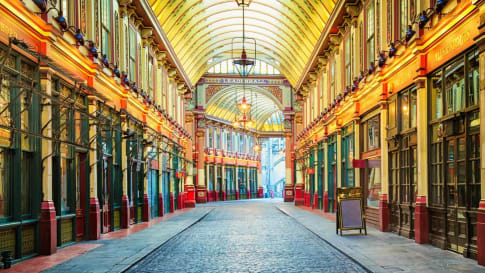
21 days
Sep, JunQueen Victoria's Great Britain: a small group tour
Visiting England, Scotland
A small group tour of England that explores the history of Victorian Britain. This escorted tour spends time knowledgeable local guides with travellers in key destinations in England and Scotland that shaped the British isles in this period including a collection of UNESCO world heritage locations.
From A$15,880 AUD
View Tour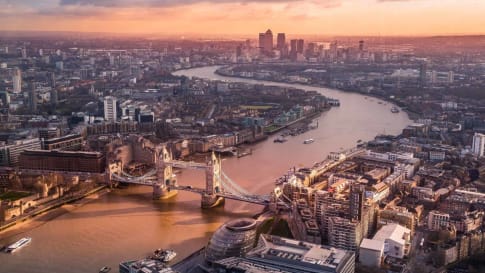
6 days
Apr, SepLondon Short Tour
Visiting England
A small group tour of London is a collection of day tours that visit and explore through the villages of the city. This escorted tour includes a journey out to Windsor castle. We explore Contemporary and learn about Roman Walled city, Medieval, Victorian London and the contemporary city today.
From A$6,995 AUD
View Tour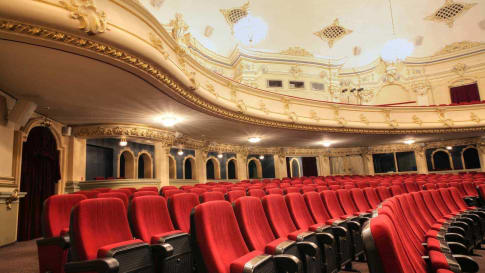
9 days
AugGilbert and Sullivan Festival Small Group tour
Visiting England
A 9 day tour with a tour director and local guide explore the Victorian music of Gilbert and Sullivan. We visit on this journey, Manchester, Harrogate, Oxford & London, attending the Gilbert & Sullivan festival and places of historic interest.
From A$9,350 AUD
View Tour
From A$13,915 AUD
View TourRelated Articles
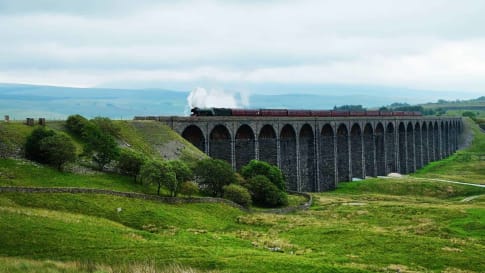
15 books on Britain's Industrial Revolution
Fifteen books on Britain’s Industrial revolution This reading list on Britain’s Industrial revolution complements Odyssey Travellers escorted small group tour that traces via the canal and railway network, the evolution of this monumental change in…
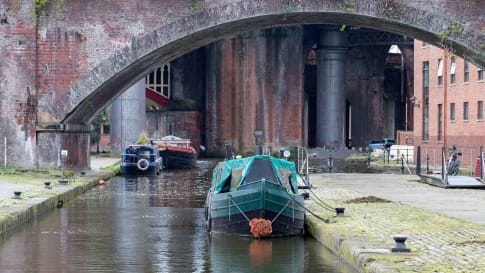
Britain: First Industrial Nation
Britain: The First Industrial Nation In the mid-18th century, the Industrial Revolution was largely confined to Britain. Historians and economists continue to debate what it was that sparked the urbanisation and industrialisation that would change…

Markets of Victorian London
Article about the markets of London as part of a small group educational tour of England, Scotland and Wales as well as Europe. Collection of Articles about Victoria and her England including the industrial revolution for senior couples and mature solo travelers.
Personalities from Queen Victoria's Britain
Article for senior couples and mature solo travellers exploring Queen Victoria's Empire including Britain and the personalities. Supports small group educational tour about the monarch and the industrial revolution.

Personalities from Queen Victoria’s Britain
Article for senior couples and mature solo travellers exploring Queen Victoria's Empire including Britain and the personalities. Supports small group educational tour about the monarch and the industrial revolution.
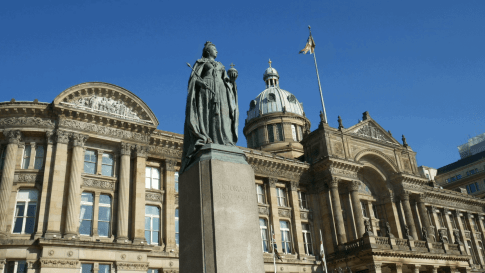
Queen Victoria's Britain: The Definitive Guide for Travellers
Article for educational small group tours of England for senior couples and mature single travellers. Queen Victoria, Britain's longest serving monarch through most of the Industrial revolution and rural life and the Empire is discussed in this article.

Queen Victoria's Britain part 2: The Definitive Guide for Travellers
Queen Victoria’s Britain (Part 2 of 2) This two-part article on Queen Victoria’s Britain was prepared by one of our Odyssey Program Leaders, Mal Bock. She will be leading this small group tour especially designed for…

A Journey Through Britain's Roman Roads
Rome's roads constitute the most remarkable culmination of its technological, logistical and bureaucratic achievements. Even a brief understanding of their history and significance can enrich your experience walking tour of Britain.
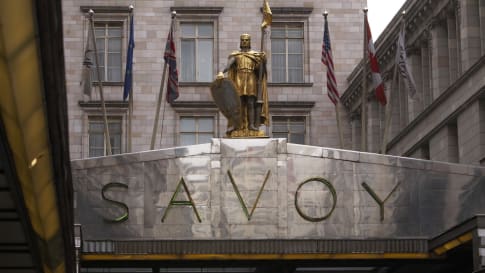
D'Oyly Carte's family
Great Britain has a history of influencers the D'Oyly Carte family is one of them. They shaped London, and the Gilbert and Sullivan history from Devon to Harrogate. Learn more with this article for a small group educational tour for senior couples and mature solo travellers.




